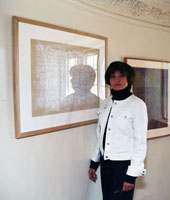In his 1914 essay, “The Aesthetic Hypothesis,” Clive Bell distinguishes between “life emotion” and “aesthetic emotion.” Here’s an excerpt:
“Representation is not of necessity baneful, and highly realistic forms may be extremely significant. Very often, however representation is a sign of weakness in an artist. A painter too feeble to create forms that provoke more than a little aesthetic emotion will try to eke that little out by suggesting the emotions of life. To evoke the emotions of life he must use representation. Thus a man will paint an execution, and, fearing to miss with his first barrel or significant form, will try to hit with his second by raising an emotion of fear or pity. But if in the artist an inclination to play upon the emotions of life is often the sign of a flickering inspiration, in the spectator a tendency to seek, behind form, the emotions of life is a sign of defective sensibility always. It means that his aesthetic emotions are weak or, at any rate, imperfect. Before a work of art people who feel little or no emotion for pure form find themselves at a loss. They are deaf men at a concert. They know that they are in the presence of something great, but they lack the power of apprehending it. They know that they ought to feel for it a tremendous emotion, but it happens that the particular kind of emotion it can raise is one that they can feel hardly or not at all. And so they read into the forms of the work those facts and ideas for which they are capable of feeling emotion, and feel for them the emotions that they can feel—ordinary emotions of life. When confronted by a picture, instinctively they refer back its forms to the world from which they came. They treat created form as though it were imitated form, a picture as though it were a photograph. Instead of going out on the stream of art into the new world of aesthetic experience, they turn a sharp corner and come straight home to the world of human interests. For them the significance of a work of art depends on what they bring to it; no new thing is added to their lives, only the old material is stirred. A good work of art carries a person who is capable of appreciating it out of life into ecstasy; to use art as a means to emotions of life is to use a telescope for reading the news. You will notice that people who cannot feel pure aesthetic emotions remember pictures by their subjects, whereas people who can, as often as not, have no idea what the subject of a picture is. They have never noticed the representative element, and so when they discuss pictures they talk about the shapes of forms and the relations and quantities of colours. Often they can tell by the quality of a single line whether or not a man is a good artist. They are concerned only with lines and colours, their relations and quantities and qualities; but from these they win an emotion more profound and far more sublime than any that can be given by the description of facts and ideas.”
Clive Bell (1881-1964) was a member of the Bloomsbury Group and the husband of Vanessa Bell (neé Stephens), the sister of Virginia Woolf. As an art critic he promoted the concept of “significant form.”
All contents copyright (C) 2010 Katherine Hilden. All rights reserved.

I was at a New Year’s Day party and spent some time talking about this concept and how it is displayed in writing, particularly in “memoir” in which the emotion acts as the art. Lots more to be said on the topic, but too late for me…
Well, I’d like to hear more on the topic. Have you written about it? or blogged?